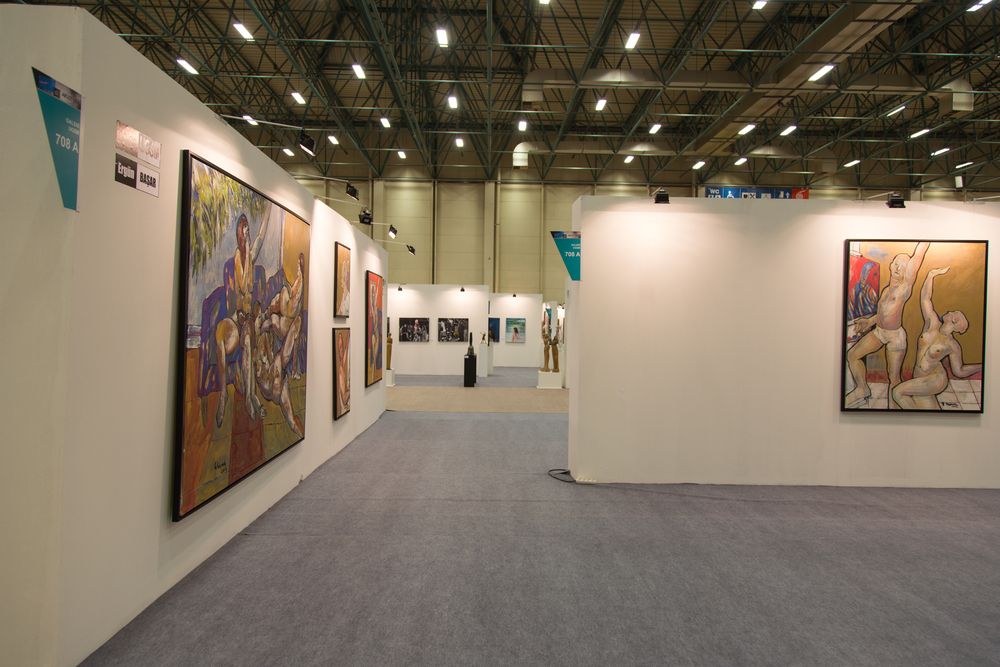Art galleries are not just spaces displaying beautiful artwork; they are also commercial entities requiring regular maintenance and care. While the artworks demand their specific care routines, the office spaces within galleries need their unique approach to cleaning. Effective office commercial cleaning within an art gallery not only ensures a comfortable environment for staff and visitors but also guarantees that the artworks remain undamaged and preserved in their best state.
Understanding the Sensitivities of an Art Gallery
Art galleries house delicate artworks that can be damaged by dust, chemical residues, and even variations in humidity and temperature. Hence, cleaning practices that might be standard in other settings, such as bank and credit union cleaning, might not be applicable here. Cleaners must be well-informed and trained to handle artworks or, at the very least, to work around them without causing harm.
Regular Dusting without Disturbing Artworks
Dust accumulation can be particularly harmful in an art gallery. Not only does it detract from the viewer’s experience, but it can also cause or accelerate the deterioration of artworks. Regular dusting is essential, using non-abrasive cloths and ensuring no direct contact with the artwork. Specialized equipment that gently removes dust without the need for touch can also be employed.
Avoiding Harsh Chemicals
While disinfection is crucial, especially in common areas, it is vital to avoid harsh chemicals in spaces close to artworks. These chemicals can react with the materials used in artworks or cause discoloration. Instead, opt for mild, art-safe cleaning agents. This is somewhat similar to the precautions taken in healthcare facility cleaning, where the wrong choice of cleaning agent could adversely impact patients.
Cleaning Lighting Fixtures
Lighting plays a pivotal role in art galleries, highlighting the artworks and setting the ambiance. Over time, light fixtures can accumulate dust, affecting their effectiveness. Regular cleaning ensures that the art is displayed in the best light, both literally and figuratively. However, while cleaning, make sure the lights are off and cool to prevent any accidents.
Regular Floor Maintenance
Floors in galleries often see high footfall, making them susceptible to dirt and wear. Regular cleaning, using non-slip cleaning agents, ensures that the gallery looks presentable and remains safe for visitors. Additionally, place mats at entrances to capture dirt and reduce the amount of cleaning required.
Maintaining a Stable Environment
While not strictly a cleaning task, ensuring a stable environment is crucial in an art gallery. Regular checks on HVAC systems, ensuring they are clean and functional, will help maintain the right temperature and humidity levels. A clean, well-maintained HVAC system also reduces the amount of airborne dust and pollutants.
Specialized Equipment and Training
Just as educational institutions require educational institution cleaning to cater to the specific needs of a learning environment, art galleries also benefit from specialized business cleaning. Using equipment that ensures minimal noise and disruption, along with training cleaners to operate in the delicate environment of a gallery, is crucial.
Emergency Protocols
In case of accidental spills or other emergencies, having a well-outlined protocol can be the difference between a minor issue and irreversible damage to an artwork. All staff, including cleaners, should be trained on the necessary steps to take in case of emergencies.
Regular Reviews and Feedback
Like any other commercial space, it is essential to periodically review cleaning practices in an art gallery. Taking feedback from staff, visitors, and even artists can provide insights into areas of improvement. Such reviews ensure that the gallery remains in pristine condition and that the artworks are preserved for future generations.
Handling Waste Disposal
In any commercial space, waste management is crucial, and an art gallery is no exception. However, due to the sensitive nature of artworks, there is a heightened need for meticulous waste disposal. Ensure that waste, especially if it contains chemical residues from cleaning agents, is removed from gallery spaces promptly. This reduces the risk of any accidental spills or exposure that might harm artworks.
Scheduled Deep Cleaning
While daily cleaning is essential, periodic deep cleaning ensures that accumulated dirt and grime, often missed in routine cleaning, are effectively removed. However, when scheduling deep cleaning sessions, it might be ideal to do so during off-hours or days when the gallery is closed to the public. This ensures that the cleaning process does not interfere with the visitor experience and that artworks are not at risk of accidental exposure to cleaning processes.
Use of Microfiber Cloths
When cleaning surfaces close to or around artwork, using microfiber cloths can be particularly beneficial. These cloths effectively capture dust and dirt without the need for excessive chemicals or water. Moreover, they are gentle on surfaces, reducing the risk of scratches or damage.
Implementing a ‘Clean as You Go’ Policy
Encouraging staff, including administrative personnel, to adopt a ‘clean as you go’ policy can be immensely helpful. This means that minor spills or dirt are addressed immediately, reducing the risk of them causing more significant issues or becoming more challenging to clean later on. Such a policy not only keeps the gallery in top condition but also fosters a culture of cleanliness and care among the staff.
Integration of Air Purifiers
Given the sensitive nature of artworks, especially those made from organic materials, the quality of indoor air becomes paramount. Integrating air purifiers within gallery spaces can help reduce the amount of airborne dust, pollutants, and potential allergens. This not only creates a healthier environment for visitors and staff but also plays a part in preserving the integrity of the artworks.
Regular Inspection for Pests
Art galleries, especially those in older buildings or in regions prone to humidity, can be vulnerable to pest infestations. Pests like silverfish, moths, or even rodents can pose significant risks to artworks. Implementing a regular pest inspection routine is vital. By collaborating with pest control experts who understand the sensitivities of a gallery environment, potential infestations can be caught early or prevented altogether. Using non-toxic pest control methods ensures that artworks remain safe while pests are effectively managed.
An art gallery is a unique blend of a commercial entity and a sanctum for art. As such, office commercial cleaning practices within such spaces must strike a balance between thorough cleaning and art preservation. With the right tools, training, and attention to detail, galleries can ensure a welcoming environment for visitors while safeguarding the treasures within.


